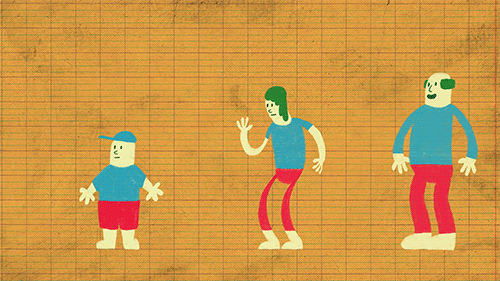The evolutionary advantage of the teenage brain

The mood swings, the fiery emotions, the delusions of immortality, all the things that make a teenager a teenager might just seem like a phase we all have to put up with. However, research increasingly shows that the behaviors of teenagers aren't just there to annoy parents, they serve a real evolutionary purpose.
Changing minds
What is a teenager? Our standard definition is arbitrary: If your age ends in "-teen," you're a teenager. The brain, however, follows a different set of rules.
"From a neuroscience perspective, we know that the brain keeps growing and developing," said Adriana Galván, associate professor of psychology at UCLA and director of the UCLA Developmental Neuroscience Lab. "Current literature suggests that it's around age 25 or so when the brain finishes the period of adolescence."
It's not that the brain stops changing—every time we learn something new, our brain changes—but by around 25, our brain has finished its long process of structural development. For teens, not only is the brain still very much in development, but different regions of the brain are changing at different rates, with important consequences.
"What that means is the regions in these different parts of the brain keep refining themselves," said Galván. "In particular, there's greater activation in emotion centers deep in the brain, and there's also continued development of the prefrontal cortex, which is found right above the eyes."
The prefrontal cortex is what allows us to think about the future, to understand consequences, and generally make better decisions. Not surprisingly, the prefrontal cortex of teens still has a lot of work to do to grow into adulthood.
One way to think about it is that brain has two sides, an impulsive side, and a cautious side, that balance one another.
Before we reach adulthood, the impulsive side of the brain is charging ahead, while the cautious side of the brain is still playing catchup. The result is a teenager.
"The analogy is that these two are kind of going head-to-head. And then eventually, as individuals become adults, the prefrontal cortex will win out, and have more influence over behavior than the impulsive part of the brain," said Galván.
The game of risk
The delayed development of the prefrontal cortex might not be a simple side-effect of human development. Teen behaviors that grownups often dismiss as mere annoyances are actually adaptive traits that help teens learn and succeed, Galván and others have found.
Teenage behaviors aren't unique to humans: adolescent chimpanzees, for example, begin courtship behaviors, play less, and increase their grooming of other, among other changes.
While some teens can appear chimp-like at times, humans have their own unique set of adolescent behaviors, including increased risk-taking and the onset of powerful emotions that weren't present in childhood.
"Risky behavior, regardless of what the risk is, taps into the very same neural regions that process reward," explained Galván. "So when you experience a risk in a positive way, the brain activation is the same as if you experienced a reward."
Galván's research has found that not only are teens more sensitive to rewards than adults, this makes them better learners.
"Compared to adults, adolescents have more [reward center] activation when they're learning a new task, and this greater activation helps them learn from the environment in a more adaptive and efficient way than the adults," said Galván. "It's kind of a surprising result."
High emotions may also benefit teens in ways that even the teens themselves likely don't appreciate.
"There is probably an evolutionary reason for why teenagers are more emotional. One reason is that emotions help us connect with other people," said Galván. "Emotions also serve as an important learning tool. When you feel a particular emotion, you're more likely to remember the event."
If something negative happens, the emotions you experience will help you steer clear of those events in the future. Positive emotions will reinforce a behavior, making you more likely to repeat it.
If Galván could bust one myth about teenagers, it's that teenagers should be quieted down until adulthood.
"The idea that the adolescent years don't serve a purpose other than annoying parents or hanging out with friends, is, I think, misguided," said Galván. "All of the experiences that happen during adolescence are important for the individual's growth."
















